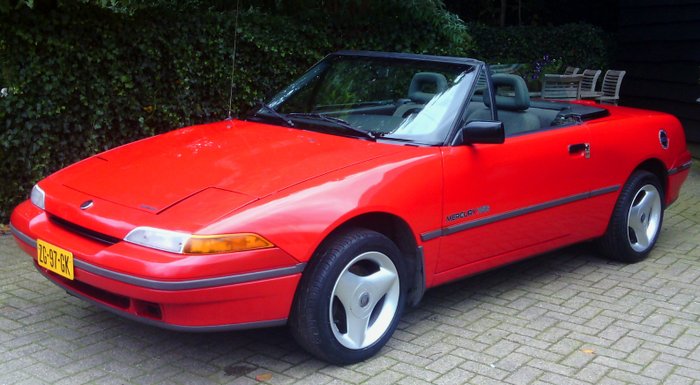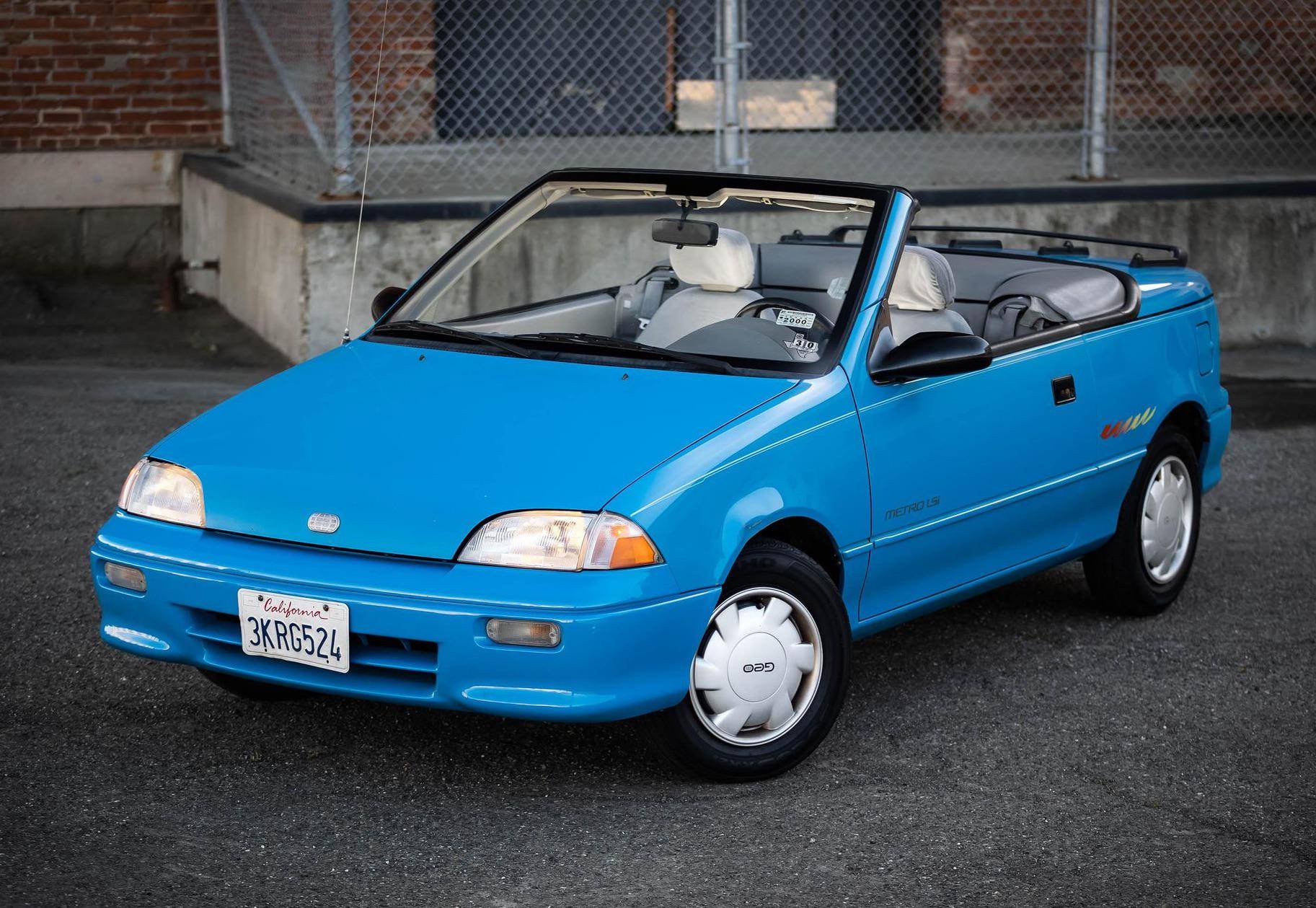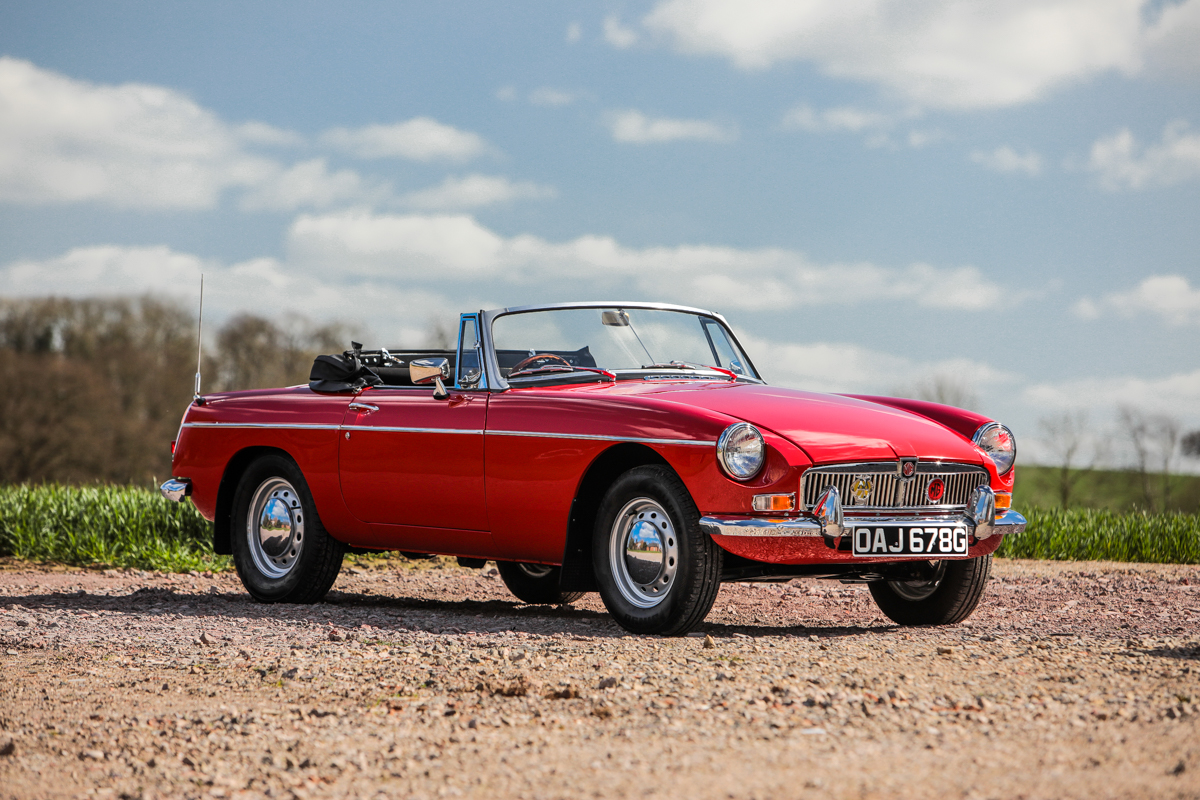[Editor's Note: This article originally appeared in the November 2022 issue of Classic Motorsports.]
Post something on social media about comparing these four particular classic roadsters, and the comments will fly:
“The MGB couldn’t possibly hang with this group of cars.”
“The TR6 has two more cylinders so it’s a shoe-in.”
“The Miata is too modern for a fair comparison.”
“The Alfa’s styling makes it the clear winner.”
As it turned out, none of it is true.
One thing that did come through after driving these cars: Nothing tempts the senses or stirs the emotions like cruising in a classic roadster on a crisp spring day or a balmy, moonlit summer night.
The world is full of roadsters that can deliver that magic, and we picked four of the most popular ones: the MGB, Triumph TR6, Alfa Romeo Spider and Mazda Miata. They all more or less fall into the same price range and can be found any day of the week.
How they compare, though, really goes beyond numbers. Does it matter if one can reach 60 a few tenths before another? A modern minivan will smoke them all.
So we decided on a real-world comparison on the back roads. How did they behave in their ideal setting, and what are they like to live with?
Our group of testers included this author (owner of three of the cars here) plus Editorial Director David S. Wallens, longtime sports car aficionado Tim Murray, and Glenn Lenhard of Glenn’s MG, who has worked on each of these marques.


First up on our roadster list is the iconic MGB. To be honest, our intent was to have a chrome-bumper model in our lineup, but the classic car gods were not about to let this happen: Twice that car broke on its way to our test day.
Glenn Lenhard of Glenn’s MG Repair, a cornerstone in the marque’s community, bailed us out and brought along a customer’s 1980 roadster. Despite the later looks, though, some backdating brought it in line with the earlier models: twin SU carbs, throatier engine note and a lowered ride height. This comfortable, well-sorted car was a blast. While not the powerhouse of the group, it held its own just fine.
[Simple Carbs: Rebuilding and Tuning an SU Carburetor]
The downsides of the MGB? Especially in its later, rubber-bumper form, the sight of one doesn’t stop you in your tracks like the TR6 and especially the Alfa.

Another knock on the MGB is the interior styling. Especially after 1967, the interior channels “cheap economy car” more than “true sports car.” Take one look at the beautiful wood dash in the TR6 or the classic binnacles in the Alfa Romeo and you’ll know the MGB loses points here.
From a practicality standpoint, the ergonomics of the car are more modern than you might think. MGBs can fit larger drivers. They’re simple, reliable and as easy to keep running as virtually any car. Moss Motors and other companies have almost every part in stock, and any larger town has a shop that can fix these cars.
The value proposition on the MGB is also rock solid. While prices are finally creeping up, this roadster is perhaps the bargain of the bunch.

- David: “I liked it much better than I expected.” … “Torquey enough even though just four cylinders.” … “It had the right amount of intake honk and exhaust burble.”
- Tim: “Way better than expected.” … “Surprisingly modern feel.” … “Not as modern as the Miata but definitely more so than the TR or Alfa.” … “It pulls strongly to redline and keeps up well with the more modern Miata.” … “Plenty of grip, but immediate turn-in is maybe a bit too edgy.”
- Glenn: “The MGB is cheap to buy, and every part is easily available.” … “This what you mean by classic sports car.”


It’s hard to discuss the MGB without mentioning the day’s other popular British roadster, the Triumph TR6. For many, these two sum up the scene of that era–and don’t worry, Italy, we’ll get to you next.
This 1969 Triumph TR6 comes from the Classic Motorsports fleet. We restored it and know every inch of the car. It’s lightly modified but hasn’t lost any of the original feel. Instead of the stock, much-maligned Stromberg carburetors, we fit a pair of SUs while also increasing compression and fitting a Good Parts camshaft. The Triumph also received a Toyota five-speed gearbox, Koni dampers and some extras from the Moss Motors catalog.
As a result of the work, our TR6 is about as sorted as one can get. That straight-six feels and sounds powerful. The interior looks new–maybe better than new–and despite the car’s relative smallness, there’s plenty of room for those taller than 6 feet.
But three major faults hurt the TR6. First, the Triumph’s body-on-frame construction feels dated compared to the three unibody cars in this test. That same construction also gives the TR6 a narrow cockpit–narrow to a fault. And third, while the TR6 can boast of independent rear suspension, it’s rather crude.

But there’s still a lot to love here. A Triumph TR6 is easy to maintain and enjoys strong parts availability–last we checked, only some trim can be hard to find. And parts are no more expensive than they are for the Miata or MGB.
These Triumphs have also proved reliable. The only real trouble spots are the rather complicated rear suspension and differential mounts. And, of course, they can rust.

- David: “It’s fine for cruising around but not confident about attacking off-ramps at highway speed. There’s just a lot of looseness going on.” … “The wood dash looks rich and upmarket, but when compared to the Alfa, it’s rather plain.” … “It’s a classic, but a narrow classic. Make sure you fit before falling in love.”
- Tim: “It has the most classic styling of the group: You can taste the fish and chips.”
- Glenn: “While not a high-revving engine, it certainly has a nice sound.”


Development work on the Miata started back in 1982, with the car finally coming to market in 1989 as a 1990 model. Proclaiming that the Miata is not a classic car would be like saying the same about an MGA in 1990.
The Miata, like its predecessors, can be rather basic. Our bright-red 1993 model has no options other than a radio. It even lacks a/c. It’s also rather close to stock, the only upgrades being Tokico dampers, Flyin’ Miata springs and that luggage rack.
[What would you do with a nearly perfect NA Miata? | Column]
Ergonomically, the Miata is well laid out with comfortable, logical controls. It’s a small car, though, and that means the cockpit is tight. A tall driver will hit their leg on the emergency brake handle and have trouble keeping their forehead below the top of the windshield. Of the cars in our group, the Miata also offers the smallest trunk and no space behind the rear seats.
But there’s still much to love. The injected, twin-cam, 1.6-liter engine is a jewel that can easily last beyond 200,000 miles. More than 30 years after its release, the rest of the Miata has also proved to be rather stout.

The Miata’s handling is about as good as it gets. Look no further than any race or autocross results for proof.
While it’s the newest car in our group, the styling has aged rather nicely. Some might say it looks a bit bland, but perhaps that’s only because the cars are still a bit common; we recall the same being said about the MGB at one time. As these early Miatas become a rarer sight, people will start to respect their clean, simple lines again.
And good early Miatas are getting harder to find. If you want one of these cars, get it now.

- David: “Mazda got it just right out of the box, although an entire aftermarket awaits.” … “It’s basically the gold standard for any kind of sports car made since.”
- Tim: “Ergonomically, it’s just like every other new car of the ’90s, which means it’s also better than most cars of today.” … “It revs quickly and smoothly, but it lacks the throaty roar of the TR6 or Alfa.”
- Glenn: “The cockpit is tight but comfortable. The interior styling is simple yet perfect.” … “This is a car you could drive every day.”


Of our four roadsters, the Alfa presents the most engaging face. Its timeless lines flow from nose to tail, accented with just the right dash of chrome.
This one also comes from the Classic Motorsports family. As a 1971 model, it features the last of the high-revving 1750cc engines; Alfa moved to 2.0-liter power the following year. Despite just 1750cc of displacement, the Alfa boasted the most power of our quartet–and our testers noticed it.
Like the others here, the Alfa also received some appropriate, period-correct updates, including the NLA Shankle suspension system as well as Konis. The exhaust system comes from Centerline International.
The Alfa, unanimously, won the styling battle. But inside, reviews were mixed: You either love or hate the very Italian, arms-out driving position. One point that wasn’t up for debate was the rest of the interior, as each driver found it roomy, comfortable and sporting just the right details.

Like the power, the handling of the Alfa Spider was universally praised. While the worm-and-sector steering and live axle don’t make for impressive specs on paper, Alfa Romeo perfected this chassis over a nearly 50-year run.
The Alfa also rides surprisingly well. We drove this car across the country a few years back, and it’s a genuinely comfortable, modern-feeling car that keeps up well with today’s traffic.
From a practicality standpoint, the Alfa is perhaps a bit more fickle than the others. Its SPICA mechanical injection requires just the right touch, but when it’s right, it’s right. Keeping a Spider on the road these days isn’t too difficult, either, thanks to suppliers like Centerline International.

- David: “Plenty of power for the chassis.” … “The five-speed is a big bonus.” … “Easily the prettiest car of the bunch. Where the Triumph’s gauges are just set into a flat panel, everything is sculpted in the Alfa. It’s like someone took the time to really cater to the passengers.”
- Tim: “The Alfa’s lines are delicate and soft and have aged well.” … “The car begs to be pushed into the turns. It has more body roll than the other cars in this group but lots of grip.”
- Glenn: “Just enough exhaust sound, smooth, good power and no noises.”
Drawing Some Conclusions

Even though our crew grew up with sports cars, a few surprises came out of the day. Perhaps the biggest shock: Our MGB, despite being seen as a bit common and saddled with later safety updates, performed very well. It finished near the top in every category.
Also surprising: The Triumph didn’t receive as much praise as expected. Despite that six-cylinder engine and iconic styling inside and out, the body-on-frame construction and narrow cockpit really put off our testers.
The Miata is the clear bargain of the group. It finished near the top in every category yet is still priced below the others–although values are moving up quickly.
While many have called the Miata the best British sports car ever built, few compare the Mazda to the Alfa Spider–which, we have to say, shone the brightest out of these four.
The Alfa matches the ride and handling of the Miata while also featuring a slick five-speed transmission, four-wheel-disc brakes and an injected, high-revving, twin-cam engine.
Plus, the Alfa has drop-dead good looks. Sure, the other cars are appealing, but the Alfa takes roadster aesthetics to another level.
The Alfa was more expensive then and is a bit more expensive now, but our crew felt that the extra money is worth it. It was, simply, the day’s winner.

Comments
I read this article on a flight from Palm Springs up to Seattle . I thought most of it was fair to say comparison wise. The only car I haven't driven in the bunch is a TR6. I've even driven the roadsters you didn't test. I'm glad I didn't make it to the 2000 Challenge as I would have had to Pimp Slap you Tim. Why you ask? I have both a Alfa Spider and a Fiat spider in my garage. The fiat has a way sexier look to it than the Alfa does. Not saying the Alfa is a slouch it just looks like most of the other slab sided sports cars out there.
My sister's boyfriend got a new 1970 mgb when he graduated college (koo koo ka Choo, Mrs Robinson), which he left with me for the summer while he did it stint in the peace corps.
My other sister's boyfriend had traded through 289 Mustang, chevelle SS 396, barracuda, and 350 C2 vette.
I was hooked on acceleration...until the MGB. SO much fun when you could turn without braking.
So...Corvairs with modified suspensions, engine swaps....to a non-running BMW Bavaria (which looks a lot like the Vair!). Now I had light weight, handling, reasonable power, headroom, and RELIABILITY. Other than my Mark 1 MR2s, I've stuck with the bimmers.
Since I'm too tall for miatas and the like, I have an M Roadster and M Coupe....solves my equation the best.
What's really nice is that we have so many options to meet our "needs".
My sister's boyfriend got a new 1970 mgb when he graduated college (koo koo ka Choo, Mrs Robinson), which he left with me for the summer while he did it stint in the peace corps.
My other sister's boyfriend had traded through 289 Mustang, chevelle SS 396, barracuda, and 350 C2 vette.
I was hooked on acceleration...until the MGB. SO much fun when you could turn without braking.
So...Corvairs with modified suspensions, engine swaps....to a non-running BMW Bavaria (which looks a lot like the Vair!). Now I had light weight, handling, reasonable power, headroom, and RELIABILITY. Other than my Mark 1 MR2s, I've stuck with the bimmers.
Since I'm too tall for miatas and the like, I have an M Roadster and M Coupe....solves my equation the best.
What's really nice is that we have so many options to meet our "needs".

wspohn
SuperDork
11/4/22 1:20 p.m.
I am a long time MG fan (not MGBs, but MGAs and MGC) and have also added a Z4MC to the fleet (but my other modern sports car, a Solstice coupe is quicker).
Enjoyed the article, which I thought was quite accurate.
I wonder where these classics would fall in the mix?




Not every old car is a classic :)
1990 Miata vs a bunch of 60's and 70's cars. Now let's put the 1990 Miata against, say, a 2022 Miata.
Keith Tanner said:
Now let's put the 1990 Miata against, say, a 2022 Miata.
Funny you mention that. I drove a 1990 NA yesterday in the morning and a 2001 NB in the afternoon. There was a big difference in the cars with the NA feeling a bit rough and tumble and NB felt more grown up. Wanting a better daily driver experience, I bought the NB. Maybe it was the difference in miles, 100k on the NA and 49k on the NB, but I wanted the more refined car for this part of my life.
In reply to jimbob_racing :
They're not really much different under the skin. Mostly a stiffer structure on the NB and better bumpstops in stock form. The 2001 interior is made with thicker materials and more emphasis on soft touch, and the car is heavier due to the structural changes. But really, they're fundamentally the same car. You could unbolt the entire drivetrain/suspension rollerskate from the NB and bolt it up to the NA in a few hours with no drilling or welding other than maybe the radiator mounts.
An ND is a very different beast but with the same spirit.
Your 71 Spider with the tiny chrome bumpers and the headlight covers is really lovely, like a Ferrari Dino's little brother. I know you said you wanted to bring a 1966 MGB , but I wonder how the comments about looks between the MGB and the Alfa would have turned out if the chrome/rubber bumper tables were turned:

vs:

In reply to Keith Tanner :
And all of those refinements definitely made the difference.
My exwife would be shocked that I made a mature choice.
Displaying 1-10 of 23 commentsView all comments on the CMS forums
You'll need to log in to post.























































